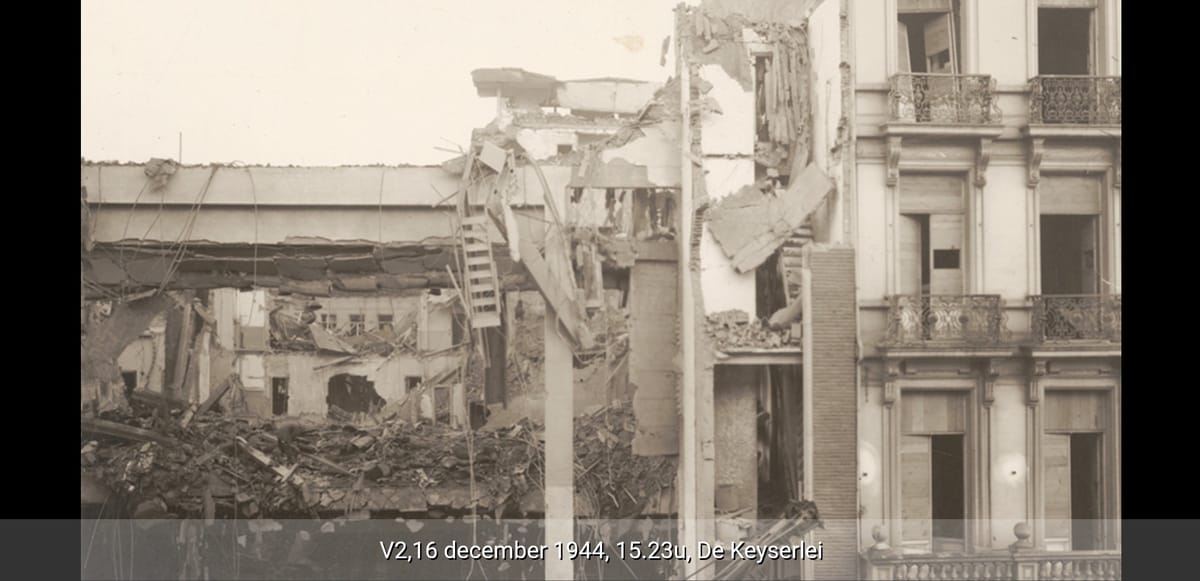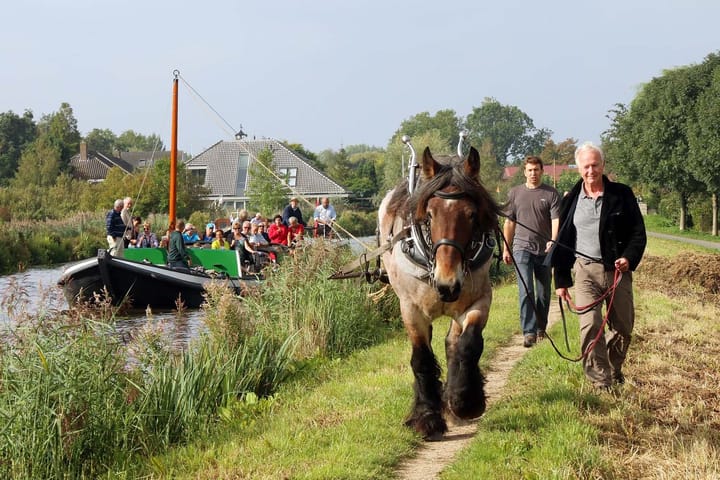On September 4, 1944, the long-awaited day finally arrived. After four years of occupation that seemed to last forever, Antwerp was finally liberated by Allied forces. What the people of Antwerp did not realize at that moment was that the torment was not over yet. In the dark corridors of underground factories in the heart of the German Empire, forced laborers worked day and night on a new secret weapon: flying bombs that could hit targets up to 240 kilometers away.
In the end, some 3,000 Antwerp citizens and more than 600 Allied soldiers will lose their lives in this terror campaign, which will last 5 months. The fast, high-flying V2 rockets prove especially deadly, while Allied anti-aircraft artillery does manage to bring down 2,183 V1s.
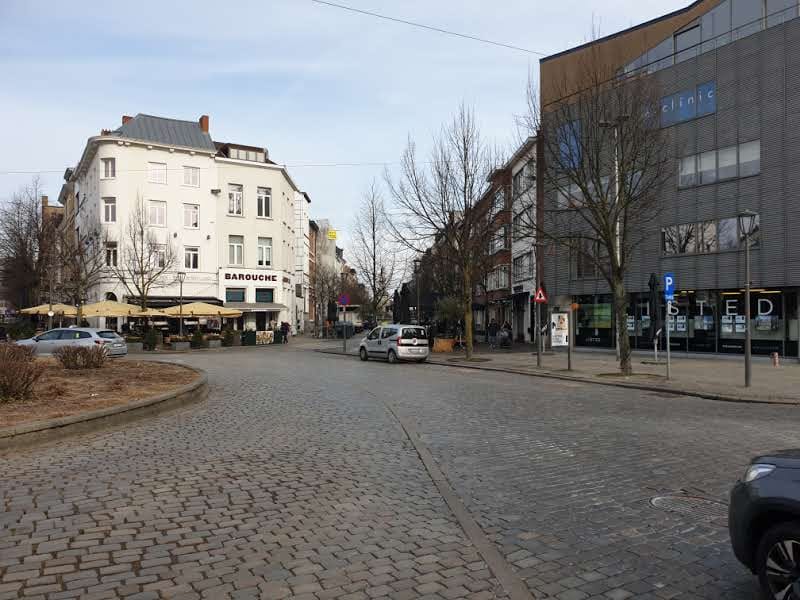
Antwerp Remembers
The V-bommenterreur walk is an initiative of Antwerpen Herdenkt, an organization that commemorates the war scars of Antwerp under the motto "Always free, never taken for granted. V-bommenterreur is one of the three walks of Antwerpen Herdenkt that you can discover via the ErfgoedApp . With the other two you step on the trail of the resistance and the persecution of the Jews.
Time to test this exciting walk, with the ErfgoedApp in hand.
The deadliest day of the V-bomb campaign: the attack on cinema Rex
The V-bomb terror walk begins immediately with the deadliest impact of a V-bomb of the entire war. On December 16, 1944, a V2 bomb strikes the heart of Antwerp, right on Cinema Rex. As one of the city's many cinemas, it provided civilians and soldiers with distraction. Also on that fateful day: the cinema is full, the De Keyserlei is crowded. In an instant, more than 500 people find death and Cinema Rex is recreated in a smoking mess. In the ErfgoedApp , I hear the testimony of Jim Mills, a British soldier who narrowly survives the impact.
Today there is still a cinema at the site of the tragedy. It is hard to imagine that this place was the scene of a massacre more than eighty years ago.
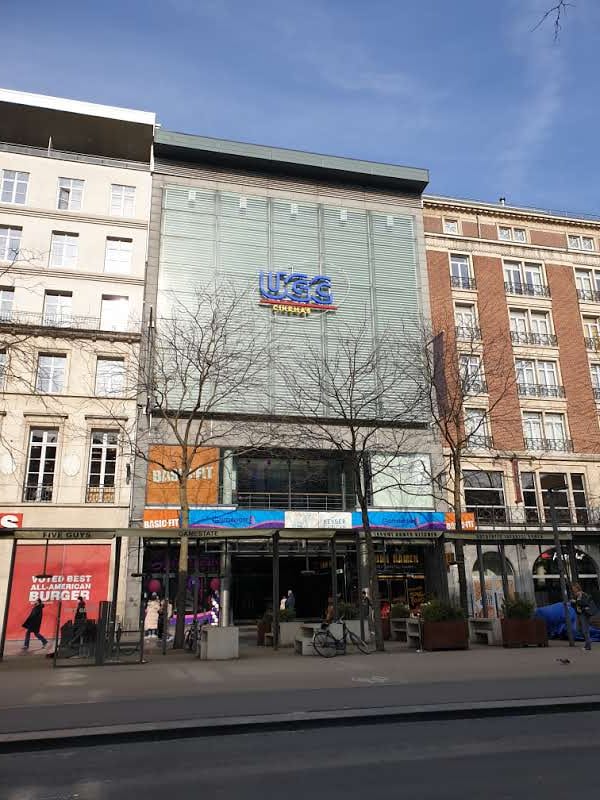
V-bomb horror not limited to people from affected cities
The walk continues toward Groenplaats. This central square next to the cathedral was used to display V-bombs shortly after the war. In the square, the app also explains another type of bomb victims: forced laborers forced to assemble bombs in underground bunker complexes. After Allied bombers began destroying German production sites starting in 1943, the Germans decided to continue the work underground. Under code name "Dora," a veritable underground concentration camp is set up near Nordhausen (central Germany). Some 60,000 prisoners work there day and night on the bombs. The app features Leopold Claessens, who, as a political prisoner, had to cooperate in the expansion of the complex. As one of a thousand Belgian forced laborers, he recounts the horrors of Dora.


After the war, Allied soldiers set up a V-bomb in the Groenplaats. Left you see the Groenplaats today, right in 1946. ©Kasper Vanderzeypen, Antwerpen Herdenkt
Decision
The walk ends at the Teniers Place, where I hear the testimony of Simone De Ceunynck. She escapes with a fright when a V2 rocket impacts nearby. Once again, the V-bomb walk offers a unique insight into how the nightmare became reality for thousands of Antwerp families. The material and human damage is enormous, but without the efforts of the Antwerp volunteers it could have been much worse.
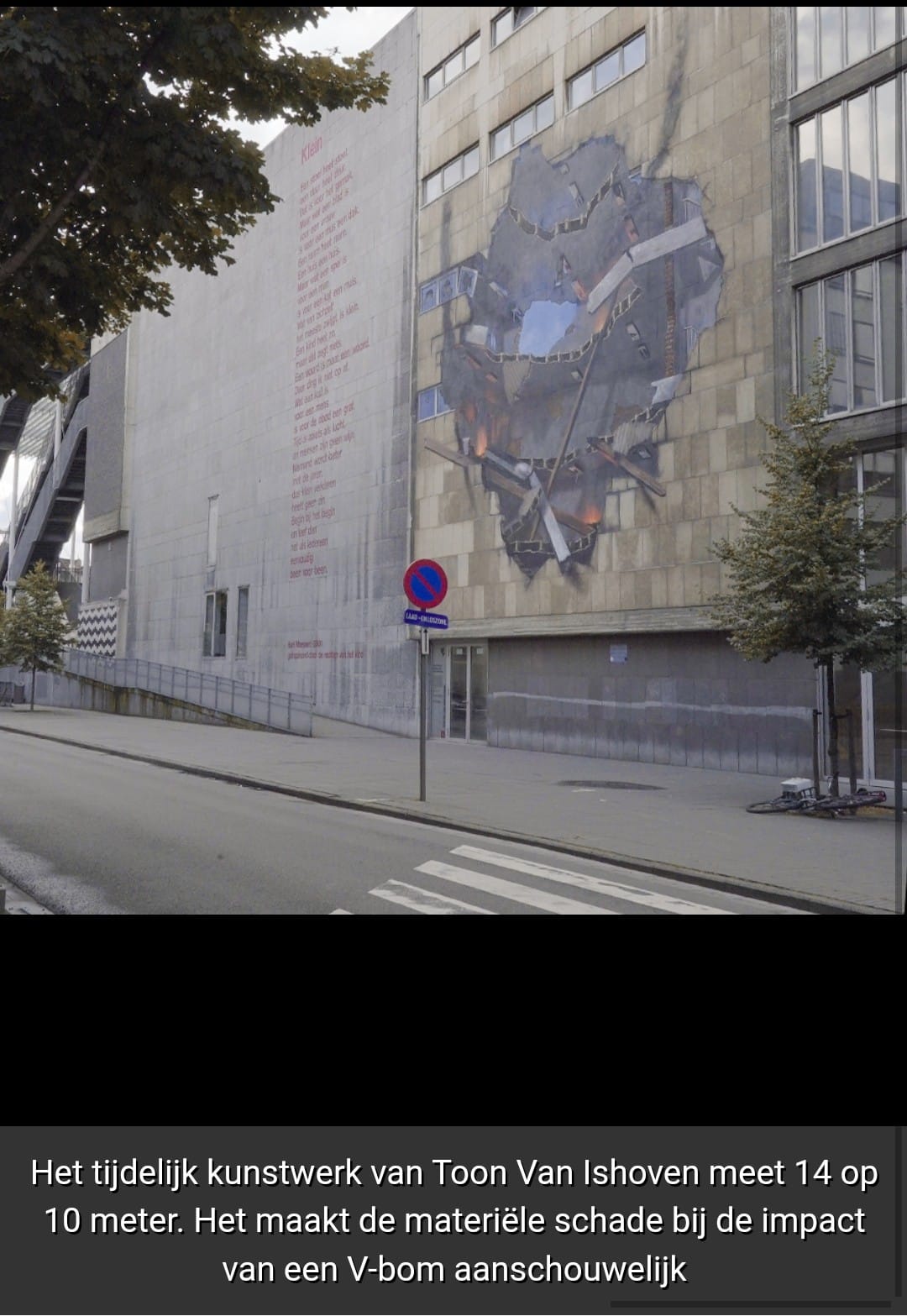
Would you like to hear for yourself the stories of the brave volunteers and the emotional testimonies of the people of Antwerp? Start the walk in the ErfgoedApp or surf to Antwerpen Herdenkt for more information about the different projects.


